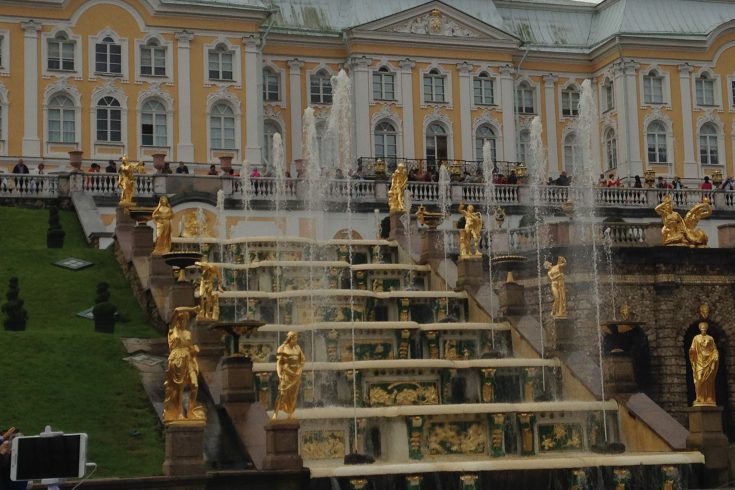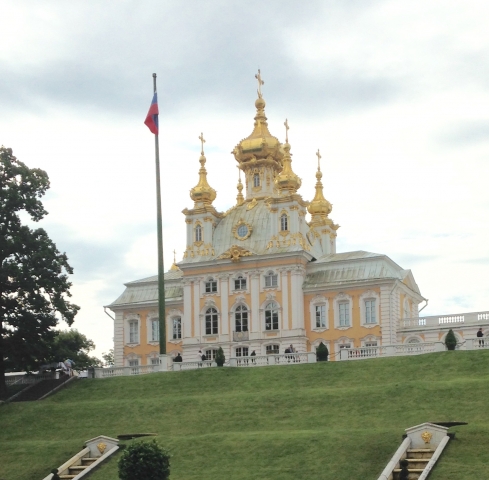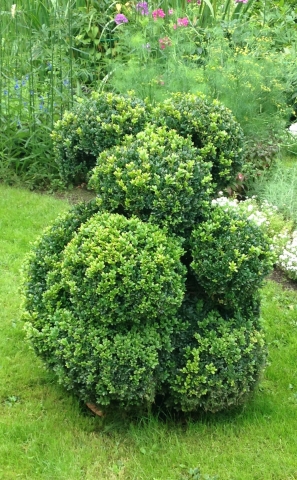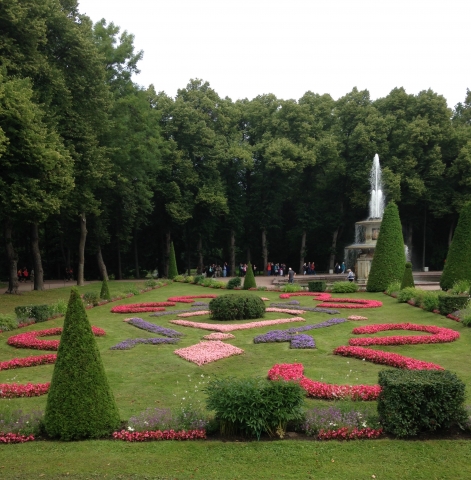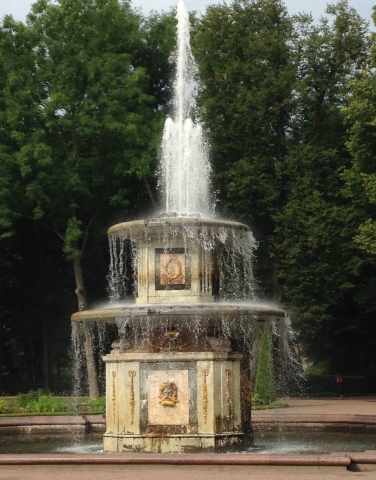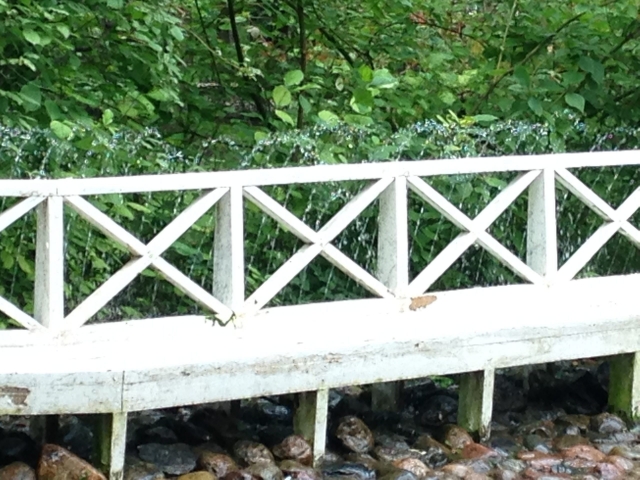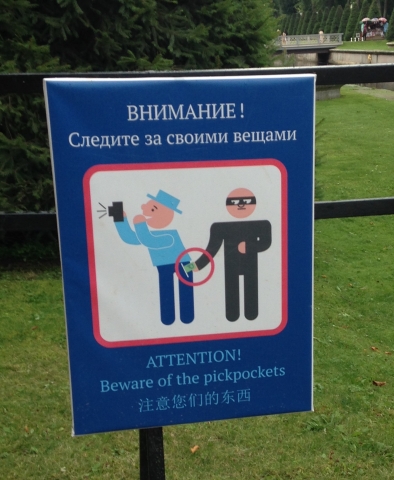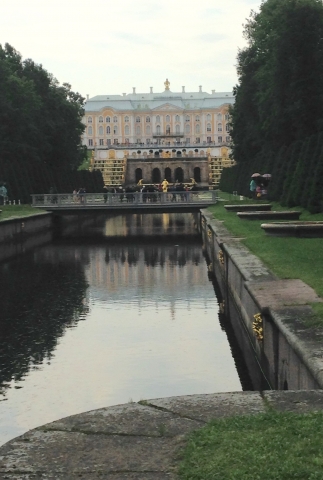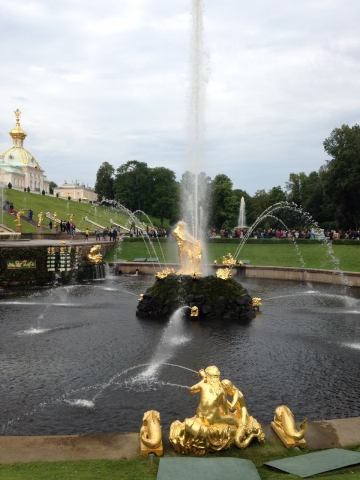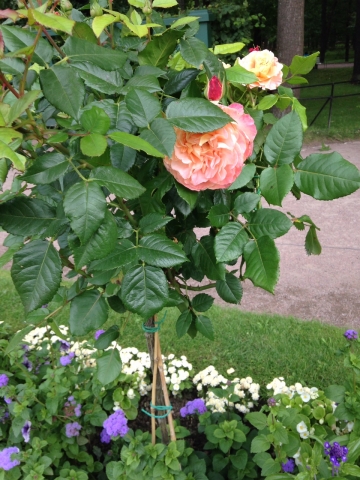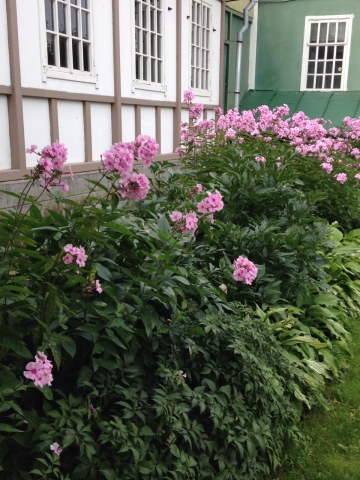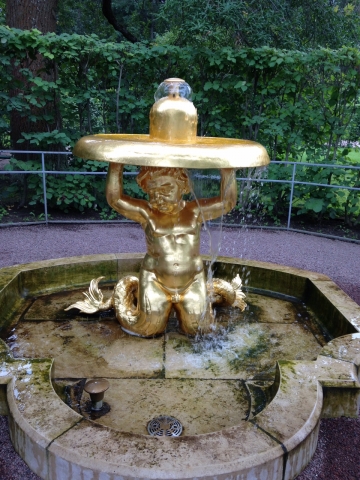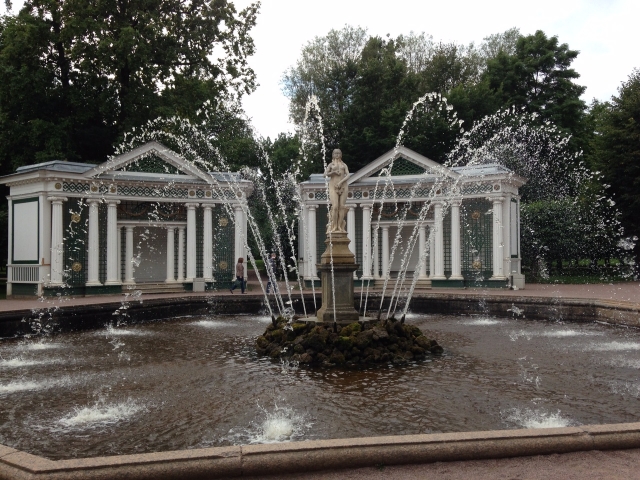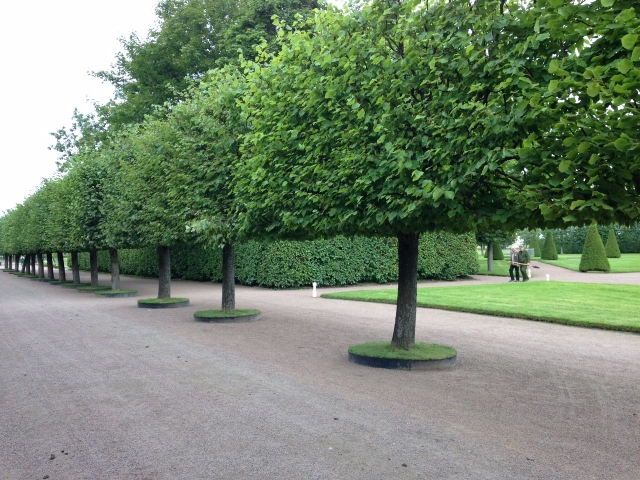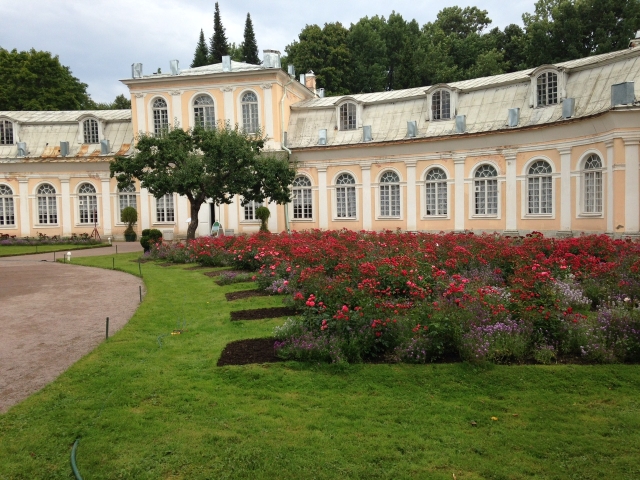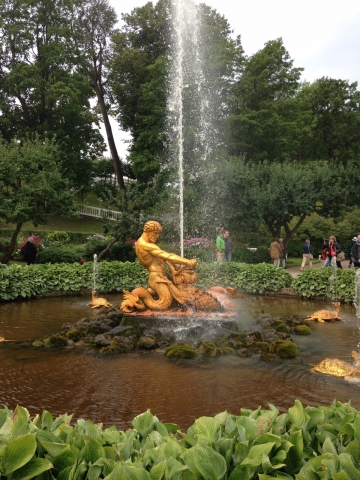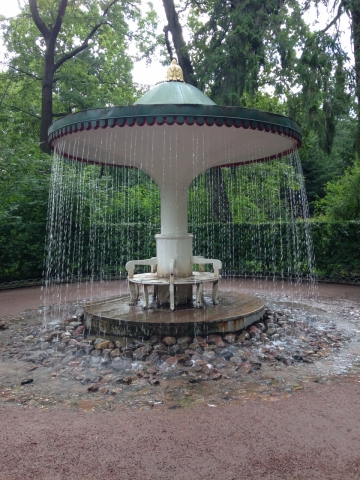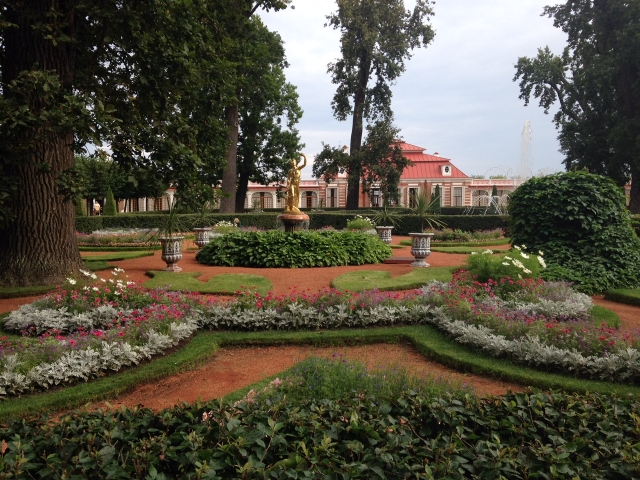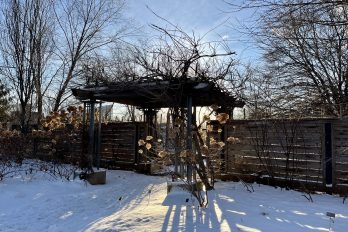The Peterhof, sometimes known as the Russian Versailies, is a definite must-see for any garden lovers visiting St. Petersburg, Russia.
While Versailie was, in fact, the inspiration for Peter the Great’s desire to build an imperial palace, a major difference is that the Peterhof‘s impressive fountain complex was built on a much larger scale with gilded figures and several springs of sparkling water.
The main attraction is the beautiful Lower Park with more than 150 fountains and four cascades, the most impressive one being the Grand Cascade, in front of the Grand Palace: the summer palace of the Czars for more than two centuries. Today, from May to October visitors line up at 11 every morning to cheer when the fountains and classical music are turned on. My husband and I – along with the other Canadians on our recent Volga River cruise from Moscow to St. Petersburg –were no exceptions.
The Peterhof (German for Peter’s Court) was built as a celebration and commemoration of imperial expansion and modernization of Russia. Begun in 1703 by Peter the Great, the estate has been added to by each subsequent ruler who marked his or her reign by adding another fountain, garden or palace. The fountains range from tiny to large, formal to tricky, such as a white wooden bench that becomes a fountain and soaks unsuspecting visitors who stop to sit down. The largest fountain features a statue of Samson tearing open a lion’s jaw, symbolizing Peter’s victory over the Swedes.
Like other St. Petersburg suburban estates, Peterhof was ravaged by German troops during World War II and largely destroyed but employees were able to save some of the treasures and fountains. One of the first estates to be restored after the war, Peterhof was opened to the public in 1945 and the facades of the Grand Palace were restored in 1952. The first areas of land to be developed were the formal gardens around Monplaisir and Marly Palaces.
In the Upper Gardens, south of the Grand Palace, three alleys lead to the Palace, surrounded by formal flowerbeds and low, clipped hedges. Because the Peterhof is virtually located as far north as the Yukon, blooming flowers in late August were mainly annuals, many planted in raised beds. There were still some roses, presumably varieties bred to be hardy in northern climates.
Today, the entire ensemble includes Grand Peterhof Palace, Marly Palace, Monplaisir Palace, and the Upper and Lower Parks. We toured the Grand Palace which is full of paintings and other treasures, magnificent gilded walls, painted ceilings and decorative wooden floors as well as black and white photos of the damage done to the estate during World War II.
The town of Peterhof is 29 km/18 miles west of St. Petersburg on the eastern edge of the Gulf of Finland.

